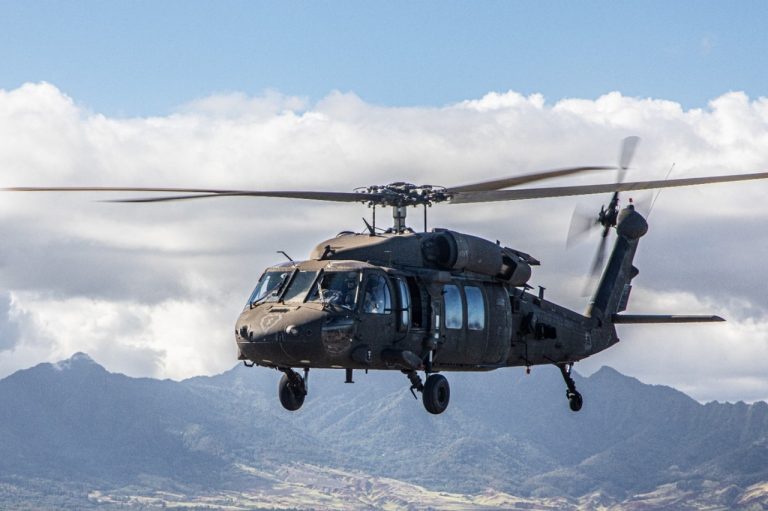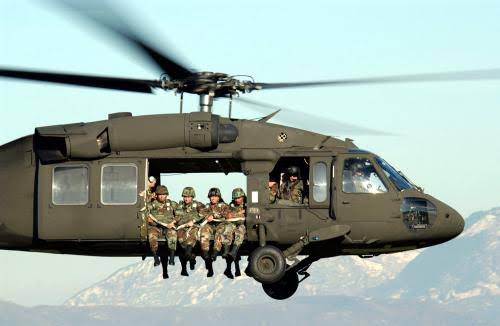The Duty of UH 60 in Modern Armed Force Workflow
The Duty of UH 60 in Modern Armed Force Workflow
Blog Article
Discovering the Ingenious Innovation Behind Aircraft Layout and Design
The area of aircraft design and engineering is witnessing a transformative change driven by cutting-edge innovations that enhance sustainability, efficiency, and performance. As the market grapples with the difficulties of environmental responsibility, growths in sustainable aeronautics modern technologies assure to reshape the future.
Advanced Materials in Aircraft Layout
How can the combination of sophisticated products revolutionize airplane design? The unification of sophisticated products, such as carbon fiber composites, titanium alloys, and advanced porcelains, plays a vital role in enhancing aircraft performance and performance.
Furthermore, advanced materials display boosted resistance to deterioration and tiredness, leading to reduced upkeep prices and extended life span. For example, the usage of titanium in important elements aids endure extreme temperatures and anxieties, while carbon fiber compounds give adaptability in design and manufacturing procedures. This versatility permits more aerodynamic forms, adding to premium efficiency characteristics.
Moreover, the assimilation of clever materials, which can change buildings in feedback to outside stimuli, opens up new methods for flexible systems in airplane design. uh 60. These innovations promise not just to improve safety and functional efficiency but likewise to contribute to sustainability efforts by minimizing ecological influence with minimized discharges. In summary, advanced materials are redefining the landscape of aircraft design, leading the way for a lot more effective, long lasting, and eco friendly aeronautics services
Wind Resistant Innovations for Efficiency
Wind resistant innovations play a critical function in boosting airplane performance, dramatically affecting fuel intake and total performance. Developments in airfoil layout, such as the introduction of supercritical wings, enable for maximized lift-to-drag ratios, minimizing drag at transonic speeds. These innovations make it possible for aircraft to preserve greater speeds with lower gas expense, straight impacting operational prices and ecological sustainability.
Additionally, the combination of winglets has shown reliable in minimizing vortex-induced drag at the tips of wings, additionally boosting gas performance - uh 60. This style alteration leads to a decrease in wake disturbance, adding to enhanced wind resistant efficiency throughout cruise conditions

In addition, computational fluid characteristics (CFD) devices have transformed the screening and improvement of aerodynamic shapes, enabling specific simulations of air movement around airplane (uh 60). This allows designers to introduce constantly, ensuring that modern-day airplane not only satisfy regulative requirements however additionally push the boundaries of efficiency in aviation

Function of Computer System Simulations
Computer simulations have come to be an indispensable device in the area of aircraft style, making it possible for designers to conduct detailed evaluations and optimizations of various style facets. These simulations enable for the online testing of wind resistant residential properties, structural integrity, and efficiency metrics long before physical models are developed. By utilizing computational liquid dynamics (CFD) and finite element evaluation (FEA), engineers can forecast exactly how air moves around the aircraft and exactly how various materials will certainly reply to tension and pressure.
Moreover, computer system simulations help with the expedition of a large range of scenarios and variables, speeding up the layout process and minimizing expenses connected with physical screening. This capacity not just boosts the precision of forecasts regarding airplane behavior however additionally uses understandings right into possible layout enhancements that could not be instantly evident through conventional techniques.

In addition, simulations assist make sure conformity with strict safety and security policies by enabling designers to recognize and fix possible concerns early in the layout stage. The assimilation of simulation modern technologies into the aircraft design procedure underscores the considerable developments in engineering techniques, eventually adding to the growth of more secure, more effective, and ecologically friendly airplane.
Artificial Knowledge in Design
Synthetic intelligence (AI) is changing the design landscape, particularly in aircraft style, by boosting decision-making procedures and enhancing style process. Through machine learning formulas, AI can evaluate substantial datasets, discovering patterns you can try this out and insights that inform design choices and improve general efficiency.
AI applications in aircraft design include generative layout, where algorithms produce numerous design choices based upon defined criteria, allowing engineers to evaluate a wider series of opportunities. This not only speeds up the style stage yet additionally ensures that the end products fulfill stringent performance and safety and security criteria.
Furthermore, AI-driven anticipating analytics promote maintenance scheduling by examining historic data and anticipating possible failings. This proactive method minimizes downtime and boosts here airplane dependability.
Additionally, AI aids in simulation and modeling, allowing designers to check styles under numerous conditions without the requirement for physical models. This capacity reduces growth timelines and decreases expenses connected with conventional testing approaches.
Lasting Air Travel Technologies
The solution lies in the fostering of sustainable air travel modern technologies that prioritize performance and minimize carbon exhausts. Advancements such as sustainable air travel fuels (SAFs), which are obtained from eco-friendly resources, have arised as a critical part in accomplishing lower lifecycle exhausts.
Moreover, improvements in aircraft style, such as the development of lighter materials and even more aerodynamically reliable forms, contribute to improved fuel performance. Electric and hybrid propulsion systems are additionally gaining grip, offering a pathway to lower reliance on nonrenewable fuel sources and lessen greenhouse gas emissions.
The combination of these technologies is supported by governing frameworks and sector collaborations focused on establishing enthusiastic sustainability targets. Electronic devices like information analytics and synthetic intelligence can enhance trip operations, even more boosting fuel effectiveness. By accepting sustainable techniques and innovations, the aviation market can not only satisfy the growing need for air traveling yet likewise play an essential duty in attending to environment modification, guaranteeing a much more lasting future for air transport.
Conclusion
The convergence of sophisticated products, aerodynamic developments, and cutting-edge modern technologies notes a substantial development in aircraft layout and engineering. The assimilation of carbon fiber compounds, titanium alloys, and AI-driven processes not only boosts efficiency and performance however also improves operations and anticipating maintenance. In addition, the continuous advancement of sustainable air travel innovations highlights a commitment to ecological responsibility, leading the way for a greener future in air travel. This continual development will certainly shape the sector's trajectory for many years ahead.

Computer simulations have ended up being a crucial tool in the field of airplane layout, enabling engineers to carry out in-depth evaluations and optimizations of numerous layout aspects.The convergence of sophisticated materials, wind resistant advancements, and sophisticated innovations helpful hints marks a considerable advancement in airplane design and engineering.
Report this page